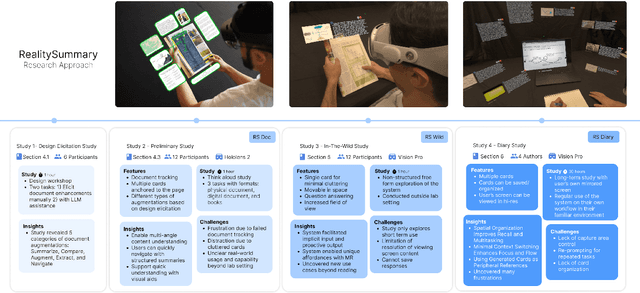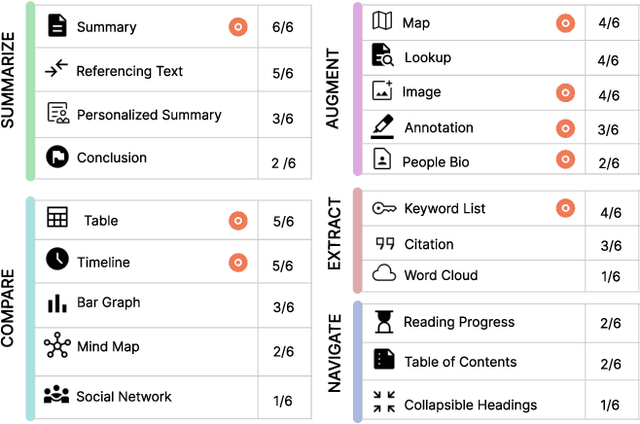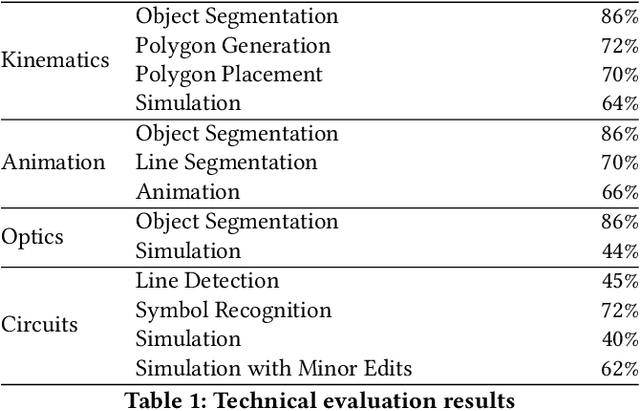Nandi Zhang
RealitySummary: On-Demand Mixed Reality Document Enhancement using Large Language Models
May 28, 2024



Abstract:We introduce RealitySummary, a mixed reality reading assistant that can enhance any printed or digital document using on-demand text extraction, summarization, and augmentation. While augmented reading tools promise to enhance physical reading experiences with overlaid digital content, prior systems have typically required pre-processed documents, which limits their generalizability and real-world use cases. In this paper, we explore on-demand document augmentation by leveraging large language models. To understand generalizable techniques for diverse documents, we first conducted an exploratory design study which identified five categories of document enhancements (summarization, augmentation, navigation, comparison, and extraction). Based on this, we developed a proof-of-concept system that can automatically extract and summarize text using Google Cloud OCR and GPT-4, then embed information around documents using a Microsoft Hololens 2 and Apple Vision Pro. We demonstrate real-time examples of six specific document augmentations: 1) summaries, 2) comparison tables, 3) timelines, 4) keyword lists, 5) summary highlighting, and 6) information cards. Results from a usability study (N=12) and in-the-wild study (N=11) highlight the potential benefits of on-demand MR document enhancement and opportunities for future research.
Augmented Physics: A Machine Learning-Powered Tool for Creating Interactive Physics Simulations from Static Diagrams
May 28, 2024



Abstract:We introduce Augmented Physics, a machine learning-powered tool designed for creating interactive physics simulations from static textbook diagrams. Leveraging computer vision techniques, such as Segment Anything and OpenCV, our web-based system enables users to semi-automatically extract diagrams from physics textbooks and then generate interactive simulations based on the extracted content. These interactive diagrams are seamlessly integrated into scanned textbook pages, facilitating interactive and personalized learning experiences across various physics concepts, including gravity, optics, circuits, and kinematics. Drawing on an elicitation study with seven physics instructors, we explore four key augmentation techniques: 1) augmented experiments, 2) animated diagrams, 3) bi-directional manipulatives, and 4) parameter visualization. We evaluate our system through technical evaluation, a usability study (N=12), and expert interviews (N=12). The study findings suggest that our system can facilitate more engaging and personalized learning experiences in physics education.
 Add to Chrome
Add to Chrome Add to Firefox
Add to Firefox Add to Edge
Add to Edge